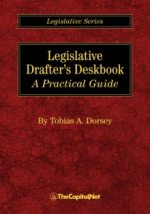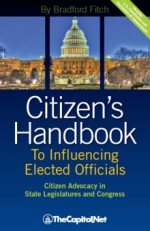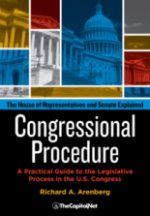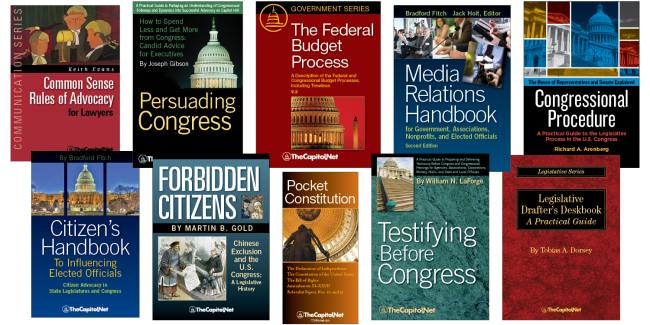From the Congressional Glossary – Including Legislative and Budget Terms
Amendments Between the Houses (Chambers) / Insist / Amendments in Disagreement / Amendments in Technical Disagreement
Korean chop-chop (fantastic doubles rallies)
Amendments Between the Houses / Between the Chambers: Method for reconciling differences between the two chambers’ versions of a measure by passing the measure back and forth between them until both have agreed to identical language; sometimes referred to in the media as the “ping pong” approach to reconciling differences in legislation. Contrast to Conference Committee.
Insist: Motion by one house to reiterate its previous position during amendments between the chambers.
The House and Senate must approve identical versions of a measure before it can be sent to the president. This process begins with one house (chamber) notifying the second house (chamber) that it has passed a measure and transmitting to the second chamber the measure as passed (the engrossed measure). If the second chamber passes the measure with changes, the two chambers can opt to either offer amendments between the chambers or convene a conference committee to resolve differences.
When one chamber sends a measure, it is messaged to the other chamber. At this stage, several actions are possible. The second chamber can ultimately approve, or concur, in the first chamber’s version. If that happens, the measure is cleared and sent to the president. Or, the second chamber can ultimately pass the measure with one or more amendments, that is, to concur with a further amendment. If that happens, the measure is returned to the originating chamber with “an amendment to the measure.”
The first chamber may accept the amendment. If that occurs, the amended measure is cleared and sent to the president. Alternatively, the first chamber may propose a further amendment. This first option of resolving differences between the two houses–the process of amendments between the houses–allows two degrees of amendments. The amendment of the second chamber is considered text that is subject to amendment. Each chamber has one opportunity to propose an amendment to the amendment of the other chamber. The process is often conducted by informal negotiations between the members and staff of the committees of jurisdiction in the two chambers. An extended exchange of amendments is rare.
House passes tax bill amid questions about Senate version
At any point in the process, either chamber may choose not to act on the version sent by the other chamber. It may insist on its own position, and formally disagree with the version sent by the other chamber. If a chamber insists on its own position, it reaches a stage of disagreement. This allows the houses to proceed to the second option of resolving differences by convening a conference committee.
Amendments between the houses is an attempt to reconcile differences in lieu of a conference committee, or even after a conference if items are reported in true disagreement or technical disagreement. The process of amendments between the houses is most often used when a measure is not controversial, there are few differences between the two chambers’ versions of a measure, or it is late in a session and there is insufficient time or will to convene a conference.
The Senate normally disposes of House amendments by unanimous consent or agrees to proceed to conference.
Surface Transportation Bill Conference Committee Meeting
Amendments in Disagreement: Provisions in dispute between the two chambers. Amendments in disagreement and Senate amendments that do not require consideration in the Committee of the Whole are also privileged.
Amendments in Technical Disagreement: Amendments agreed to in a conference but not included in the conference report because they may violate the rules of one of the chambers and would open the conference report to a point of order.
See Recede and Concur with an Amendment (CongressionalGlossary.com)
Also see
- Conference Committee (CongressionalGlossary.com)
- Engrossed Measure (CongressionalGlossary.com)
- Joint Resolution (CongressionalGlossary.com)
- Privilege (CongressionalGlossary.com)
- Recede and Concur with an Amendment (CongressionalGlossary.com)
- Unanimous Consent (CongressionalGlossary.com)
- § 6.70 House Floor: Scheduling and Privilege, § 6.270 Amendments between the Houses, in Congressional Deskbook
- Chapter 5.J. Amendment on the Senate Floor and in Committee; Chapter 6.B. Resolving Differences; Chapter 6.C. Amendments Between the Chambers; Chapter 6.D. Conference Committee; in Congressional Procedure
More
- House Rule XXII – House and Senate Relations (47-page PDF
 )
) - Senate Rule XXVIII – Conference Committees; Reports; Open Meetings
- Senate Rule XIV – Joint Resolutions, Resolutions, and Preambles Thereto
- “Amendments Between the Houses: Procedural Options and Effects,” CRS Report R41003 (40-page PDF
 )
) - “Amendments Between the Houses,” CRS Report 98-812 (6-page PDF
 )
) - “Resolving Legislative Differences in Congress: Conference Committees and Amendments Between the Houses,” CRS Report 98-696 (40-page PDF
 )
) - “The Amending Process in the House of Representatives,” CRS Report 98-995 (49-page PDF
 )
) - “Amendments in Disagreement,” CRS Report 98-813 (3-page PDF
 )
) - “Points of Order in the Congressional Budget Process,” CRS Report 97-865 (21-page PDF
 )
) - “The Legislative Process on the House Floor: An Introduction,” CRS Report 95-563 (18-page PDF
 )
)
Courses
- Congressional Operations Briefing – Capitol Hill Workshop
- Drafting Federal Legislation and Amendments
- Writing for Government and Business: Critical Thinking and Writing
- Custom Training
- Drafting Effective Federal Legislation and Amendments in a Nutshell, Audio Course on CD
- Congress, the Legislative Process, and the Fundamentals of Lawmaking Series, a Nine-Course series on CD
Publications
CongressionalGlossary.com, from TheCapitol.Net
For more than 40 years, TheCapitol.Net and its predecessor, Congressional Quarterly Executive Conferences, have been teaching professionals from government, military, business, and NGOs about the dynamics and operations of the legislative and executive branches and how to work with them.
Our custom on-site and online training, publications, and audio courses include congressional operations, legislative and budget process, communication and advocacy, media and public relations, testifying before Congress, research skills, legislative drafting, critical thinking and writing, and more.
TheCapitol.Net is on the GSA Schedule, MAS, for custom on-site and online training. GSA Contract GS02F0192X
TheCapitol.Net is now owned by the Sunwater Institute.
Teaching how Washington and Congress work ™





